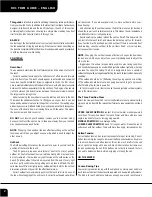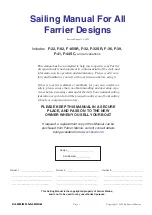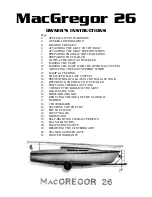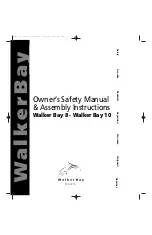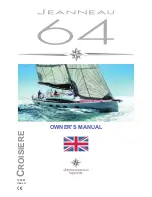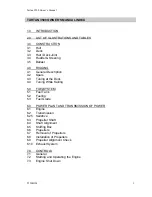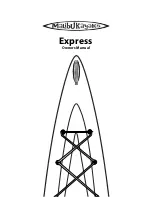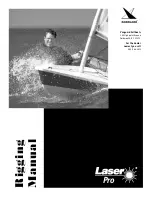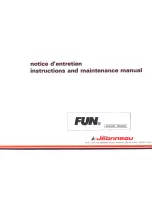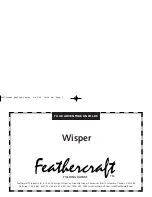
This guide
is intended to assist in obtaining the best possible performance
from your new RX1 sails. In addition to the latest tips from Bjorn Dunkerbeck,
designer, Nils Rosenblad and the Neil Pryde Team, the end of this section
contains graphic instructions showing two simple steps leading to perfect
trim for all the RX1 sail sizes from 5.8 through 10.6.
BASICS
In order to get the best performance from your sail, it is essential to understand
the fundamentals of rigging and tuning. What your sail looks like sitting on
the beach is completely different from how it looks powered up and pressurized
in all three dimensions while sailing.
CONTROLS
Downhaul
The downhaul determines the draft placement and the amount of twist in
the leech.
Correct downhaul tension puts the sail’s center of effort low and forward
ie right in front of you. The leech should appear to be twisted and somewhat
loose (see specific details that follow). Compared to the Z1, the RX1 shows
a more evenly distributed overall tension in the leech, with a bit more looseness
between the battens, especially in the top sections. The degree of looseness
(in static state on the beach) varies between the smaller slalom sizes and
the larger course racing sizes.
Undertensioning the downhaul moves the draft up and back in the sail.
This makes the sail harder to sheet in, lifting you up on your toes. An under
tensioned downhaul creates a sail shape that is too full on the leading edge
producing excessive draft and limiting top-end speed potential. It also pushes
the nose of the board down increasing friction with the water. This makes
the board slow and hard to control.
DO NOT
over tension your downhaul (unless you’re in survival mode)
because it will twist the sail too much, take power away from your sail and
may cause excessive leech flutter.
NOTE
: Changing the downhaul tension effectively changes the outhaul
tension as well. When you adjust one you will probably need to adjust the
other as well.
Outhaul
The Outhaul setting determines the amount of power in your sail and the
position of the twist in the leech.
The RX1 generally requires a minimum of ‘neutral’ to 1cm of positive
outhaul. At ‘neutral’ outhaul the clew reinforcement patch may look loose,
but not crumpled – there will be only light tension on the outhaul line on the
beach. ‘Positive outhaul’ should be measured from this point. In very light
winds or puffy conditions where getting onto a plane is difficult, the RX1
sails may benefit from a slightly looser outhaul setting. Refer to the outhaul
dimension printed on the sail for the effective minimum.
Correct outhaul tension properly positions the leech twist: to be open at
the top without sagging at the mid leech. A correctly outhauled sail will feel
well balanced. If you are overpowered, try more outhaul before over-
downhauling.
Undertensioning the outhaul causes the draft to move too far back and
allows the lower leech to twist excessively. This makes the sail unbalanced
and difficult to trim correctly underway.
Overtensioning the outhaul makes the sail too flat aft. This depowers the
sail, restricts the leech twist, and moves the balance point too far forward.
If you feel too much back hand pull, add outhaul. If there is excessive front
hand loading, ease the outhaul. If the sail feels ‘dead’ or slow to plane,
decrease outhaul tension.
NOTE
: Changing the outhaul tension effectively changes the downhaul
tension as well. When you adjust one you will probably need to adjust the
other one too.
Bigger sizes (7.6 and up) are generally used in course racing conditions
and can advantageously be used with adjustable outhaul systems, whereby
you tune the sail while sailing. The RX1 is designed to have a variety of
outhaul settings without negatively affecting the leech characteristics. Generally
speaking:
♦
The outhaul should be ‘on’ (flattening the sail) going upwind or reaching.
♦
The outhaul should be let out when going downwind, to get a ‘spinnaker
effect’ making the sail more powerful.
In fact, more and more riders also use these adjustable outhaul systems
also in the slalom sails.
The Three Position Clew
Select the clew position which is most comfortable for your personal sailing
style and which best fits the relevant performance requirements as outlined
below.
UPPER CLEW POSITION
: Excellent for smooth water or underpowered
conditions. This position makes the leech firmer and trims with less rake
angle. Also used for course racing going upwind.
MIDDLE POSITION
: Good average setting
LOWER CLEW POSITION
: Good for rougher water. Makes the leech
softer even with firm outhaul. Trims with more rake angle. Increased control.
Batten Tension
Correct batten tension is an important aspect of proper sail tuning. Correct
batten tension is just enough to remove all batten pocket wrinkles. Any more
is too much. Excessive batten tension forces too much draft into the sail
which spoils the designed shape, and may hinder rotation. Extreme over
tension can damage the sail. If the battens are correctly tensioned, there is
no need to detension them before de-rigging or storing the sail.
ON THE WATER
Course Racing Tips
Course racing requires tuning with the emphasis on more power and more
leech tension to deliver the best possible upwind and downwind performance.
The trick is to reach a balance between enough power and leech tension
2
RX1 T R I M G U I D E – E N G LI S H

